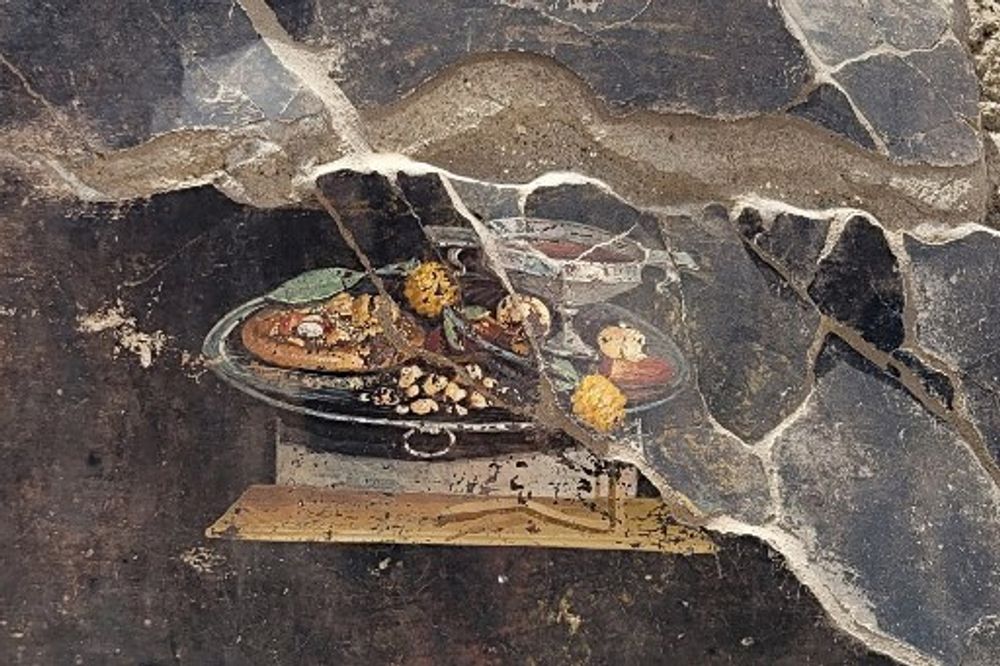
Experts at the excavation site in Italy say 'what was depicted on the wall of an ancient Pompeian house could be a distant ancestor of the modern [pizza] dish'
An ancient fresco painting of an “ancestor” of pizza was revealed on Tuesday by archeologists in Pompeii, Italy. The progenitor dish lacked cheese and tomatoes, but experts say this may be the ancient version of today's popular dish.
"What was depicted on the wall of an ancient Pompeian house could be a distant ancestor of the modern dish," experts at the archaeological park said in a statement.
Discovered in the middle of a wall during recent digs at the archaeological site, the 2,000-year-old painting shows a silver platter with a round flatbread, accompanied by fresh and dry fruits, completed by a goblet of red, red wine.
Believed to depict a Greek tradition from the 3rd to 1st centuries BC, which was called "hospitable gifts" and was offered to house guests. It has been documented by Roman-era writers, including Virgil and Philostratus.
“A frugal and simple meal, which refers to a sphere between the bucolic and the sacred,” Pompeii's director, Gabriel Zuchtriegel, was quoted by AFP. He pointed out the contrast the fresco presented with “the luxury of silver trays and the refinement of artistic and literary representations.".
He added, "How can we fail to think, in this regard, of pizza, also born as a 'poor' dish in southern Italy, which has now conquered the world and is also served in starred restaurants.”
Mount Vesuvius erupted in AD 79, burying the Roman city of Pompeii in thick ash, thereby hiding and preserving its many treasures for archaeologists to slowly bring to light. It is estimated that 15 to 20 percent of the population died in the eruption.